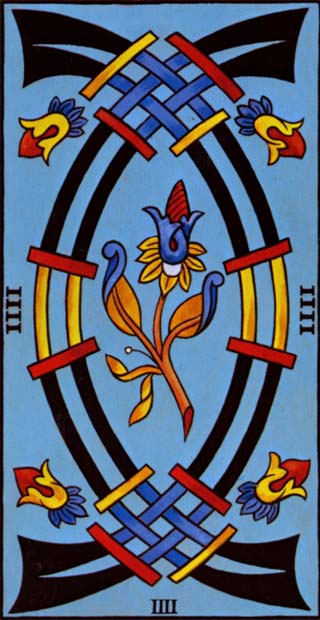Tarot cards speak in the language of pictures rather than words.
The meaning of any image in a Tarot reading is influenced by an interplay between the physical objects depicted, the history and traditions behind them, and the meanings you impose on them.
These elements work together differently from reading to reading. But the one constant is that the card’s image always tells a story that is directly relevant to your situation. And that story will differ for each person and even for the same person under different circumstances.
These thoughts were on my mind when I sat down to read an article describing an exhibit of medieval stone figurines created in Dijon, France about to be exhibited in the US.
These figures, called ‘mourners,’ were created to encircle the tomb of John the Fearless, the second duke of Burgundy.
What caught my eye was the photograph of John’s tomb, resting comfortably next to that of his wife, Margaret of Bavaria. A life-size likeness of John rests supine, hands clasped in prayer next to the likeness of his wife in the same position.
The Four of Swords from the Rider-Waite-Smith deck shows an image of a sculpture of a man in medieval dress lying atop a tomb in exactly the same position: supine, with hands clasped in prayer. He is in a room with thick white walls and a stained glass window on the upper left.
The Dijon mourners are there to pray for their duke and duchess to help them get to paradise. The duke and duchess themselves lie, eyes open, awaiting judgment.
While the RWS Four of Swords does not show the mourners, nor the angels at their heads and lions at their feet, it is clear that the imagery of the RWS card is drawn from this same medieval tradition.
The imagery speaks of a pause in the journey from life to death as the soul in question awaits news of his fate. While the expressions on the faces of the Dijon sculptures and the face of the RWS figure are peaceful, the eyes of the RWS figure is closed.
The RWS figure appears to be meditating. No matter how violent or unpleasant his demise, he is at peace now and his focus is on matters of the spirit.
The imagery of the casket frightens some people, and in the case where the card came up in a reading for a mother mourning the death of her young adult son killed in a shooting, the imagery is only too literal. But in my experience reading Tarot cards for many years, this card does not portend death.
Far more commonly, the card speaks to a time-out or a sabbatical; a time for the querent to step out so s/he can reflect or refocus. A common example is a reading involving a mother taking time away from her career to raise her young children.
Upon reflecting on the article, I now see an additional layer of meaning: the card speaks to that stage in a metamorphosis similar to that of the caterpillar who retreats into his cocoon. He retreats to avoid dissipating his energy with the demands of the outer world while he undergoes transformation within.
Submitted by Ellen M. Zucker
http://practicalastrologyandtarot.com
Leave a Reply
You must be logged in to post a comment.